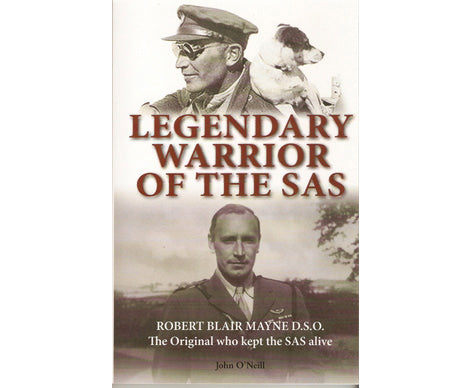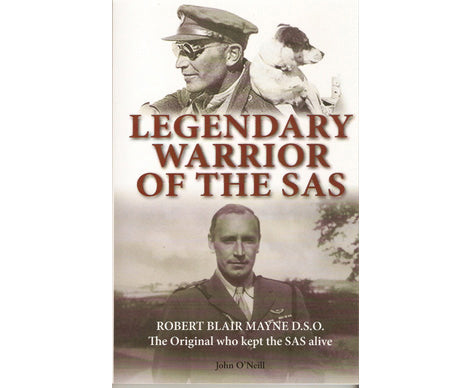Legendary Warrior of the SAS - Paddy Mayne Book
Legendary Warrior of the SAS - Paddy Mayne Book
Couldn't load pickup availability
Lt. Col. Robert Blair Mayne, DSO
Foreword
Much has been written about Blair Mayne since his death 57 years ago; and there has been much speculation about his complex character, his amazingly courageous exploits, and his untimely and unglamorous death. This book provides some further insight into the nature of the man, by revealing for the first time some more private papers and photographs that have come to light.
One aspect of his life and death is the way he dealt with the transition from operational to civilian life after the war. Posthumous psychological assessment is not possible with any certainty, but what we now know about Post Traumatic Stress Disorder (PTSD) may well have affected his behaviour, and indeed his decline and death. This book is one more contribution to knowledge that can inform those of us who work in this field and are concerned with the effective treatment of this distressing condition.
Colonel A de P Gauvain (Retired)
Chairman, PTSD Resolution
Introduction
On the 6th May 1980 the British Army’s top secret regiment the Special Air Service (SAS) burst onto the front pages of just about every newspaper, after the successful conclusion to the Iranian Embassy siege in South Kensington, London.
Everyone, (even the Prime Minister wanted to meet the men) wanted to know all about this organization, which had up until that moment been carrying out secret operations, (away from the view of the press) against terrorists across the world. It was thought that before then, only the Army top brass and the serving men and their families, knew about the SAS. Those with long memories from the Second World War, however, would have known that in fact, the existence of the original SAS was officially revealed to the world through the media in August 1944. By this time the tide of the war in France was beginning to turn in the Allies’ favour. This was in part due to the successful operations of the SAS working with the French resistance, before and after D-day on 6th June 1944.
The SAS had been working secretly behind enemy lines since its creation, in July 1941. It was the brain child of David Stirling with the help of Jock Lewes. The first successful raid on a German Airfield was led by Lt. Robert Blair Mayne, together with Sgt. McDonald, Ptes Chesworth, Seekings, White and Hawkins. For this operation Mayne was to receive the first of four Distinguished Service Orders. He had already been mentioned in dispatches for a raid on the Litani River against the Vichy French in Syria in June 1941. Jock Lewes was tragically killed in action in January 1942 and David Stirling was captured towards the end of the desert campaign in January 1943. Paddy Mayne was nominated by David Stirling to take over 1st SAS. His first job was to persuade the High Command not to disband the SAS, since he argued that it could be used in future operations. This he managed to do with tremendous success.
This book is about one of the most decorated soldiers of the Second World War, Robert Blair Mayne, Paddy Mayne to his men and Blair to his family. He was to become one of the Regiment’s greatest legends. Many authors have attempted to analyse the complex character and behaviour of Blair Mayne (BM). His untimely death in a motor car accident in 1955 ended his charmed life, because he came through the war without serious physical injury. To his men he was an indestructible ‘God like’ figure who brought good fortune to any operation he was involved in. Like many soldiers however, after the war the mental scars that he suffered in combat, with the loss of his men and friends, were not attended to. This led him into a cul-de-sac of self destruction, fuelled by alcohol and high jinks, which could never replace the surge of adrenaline ‘high’, experienced during top secret, behind-the-lines, SAS operations.
His achievements and behaviour have led many to label him as a psychopathic killer and unnecessary risk taker. This book is based upon never before published or forgotten family letters, photos and newspaper articles, inherited by the author who is a relative of BM. The letters in particular paint a picture of a caring, humorous man, who during even the toughest of times at war, found time to keep his feet on the ground and keep in touch with reality, through regular correspondence with his family.
Only £7.95 - 90% of which goes directly to PTSD Resolution.
Share


